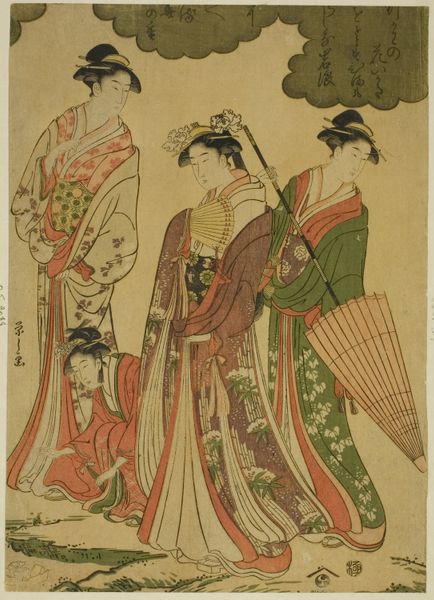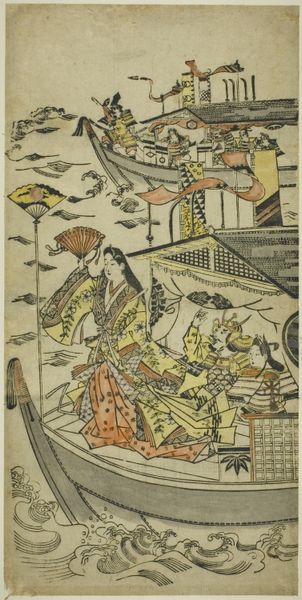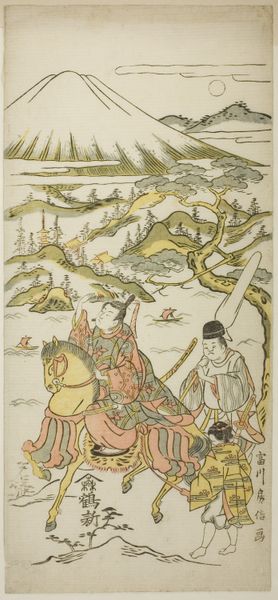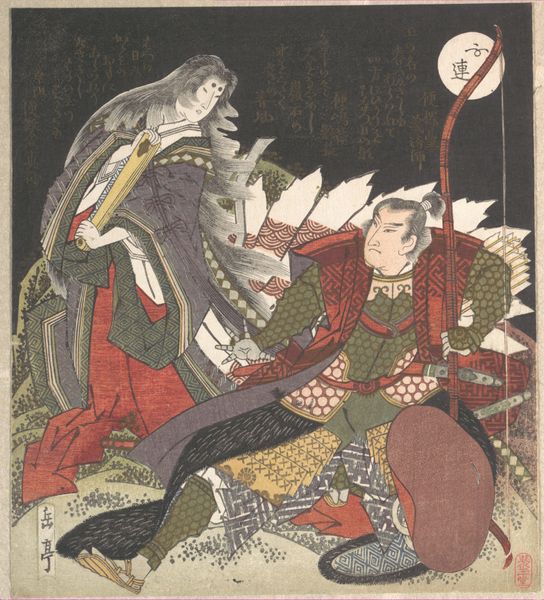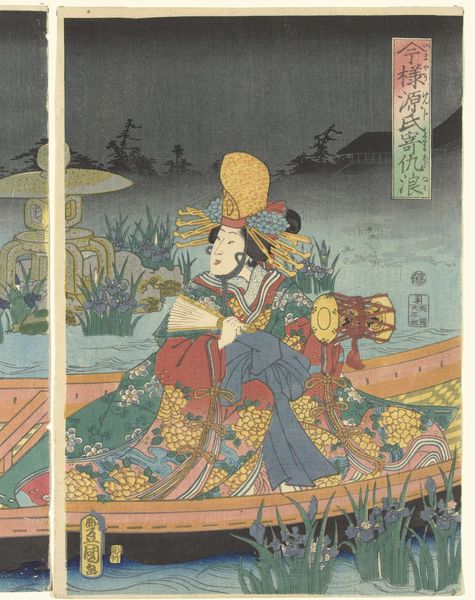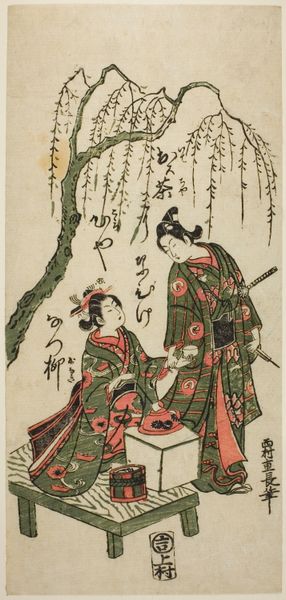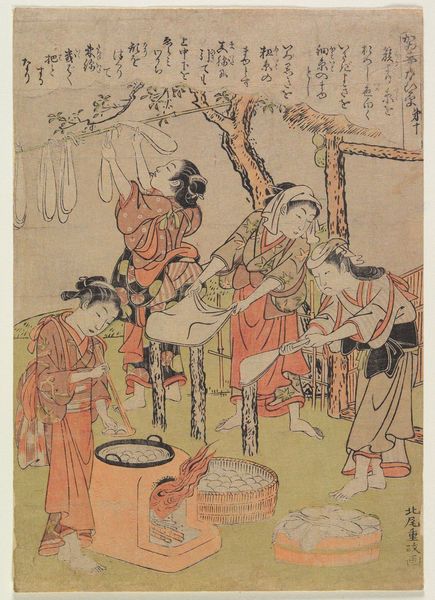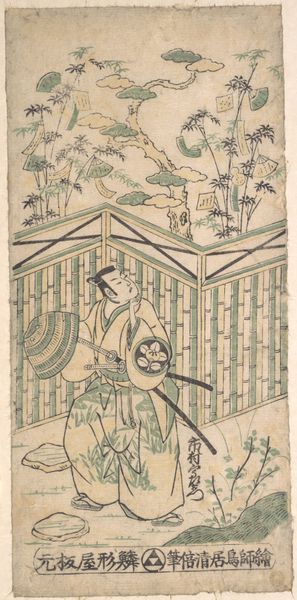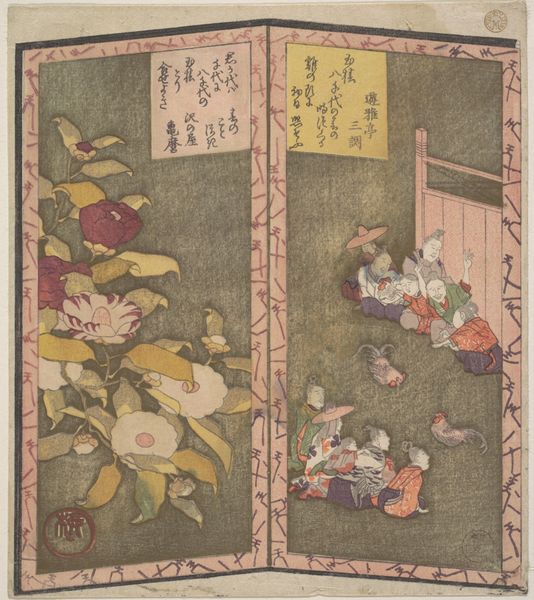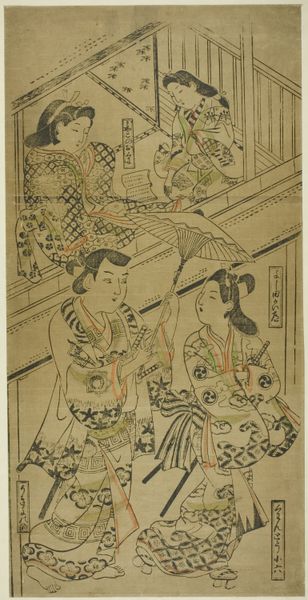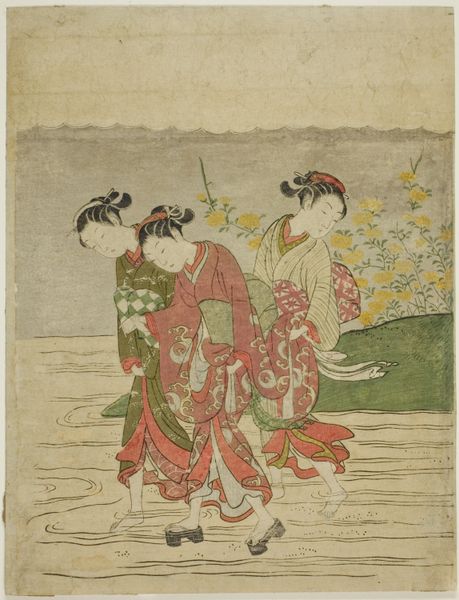
print, woodblock-print
#
narrative-art
# print
#
asian-art
#
ukiyo-e
#
figuration
#
woodblock-print
Dimensions: 7 7/8 x 5 5/8 in. (20 x 14.3 cm) (image)9 x 12 3/4 in. (22.8 x 32.4 cm) (sheet, folded in half)
Copyright: Public Domain
Editor: Here we have Okumura Masanobu's "Ben no naishi," a woodblock print from around the 18th century. The flat planes of color and simple lines give it a distinctly graphic feel, and there's almost a sense of a theatrical production happening. What story do you think the materiality of this print tells? Curator: The woodblock printing process is key. Consider the labor involved: the artist's design, the block carver’s skill in translating that design into a physical matrix, and the printer’s expertise in applying pigment. Ukiyo-e prints democratized art; images once exclusive to the elite became available to a wider public through mass production. This print is not merely an image but an object born from specific materials and a complex social apparatus of production and consumption. What do you make of the garments and how they are portrayed here? Editor: I hadn’t thought of the print as a "product," but now I see how the materiality is deeply tied to its accessibility! I suppose the clothing suggests a story of craft. It seems important to highlight wealth and status, using dyes and labor that only a few would be able to afford. It almost feels like advertisement. Curator: Precisely. The figures are adorned in elaborate garments that are painstakingly rendered through multiple color layers of ink, an allusion to the textiles' value and artistry in that period. In other words, the very means of producing the image mirrored and emphasized the luxurious lifestyle it depicted, participating directly in the cycle of desire and consumption. Don't you find that fascinating? Editor: I do now! Seeing it as a physical object connected to production changes everything. I guess I always focused on what was being depicted rather than how. Curator: Paying attention to the labor and materials involved opens up new avenues for understanding an artwork's significance beyond just its aesthetic qualities or narrative content. I learned from you too! The advertisement idea is very interesting, and it helps recontextualize the artwork for modern viewers.
Comments
No comments
Be the first to comment and join the conversation on the ultimate creative platform.

